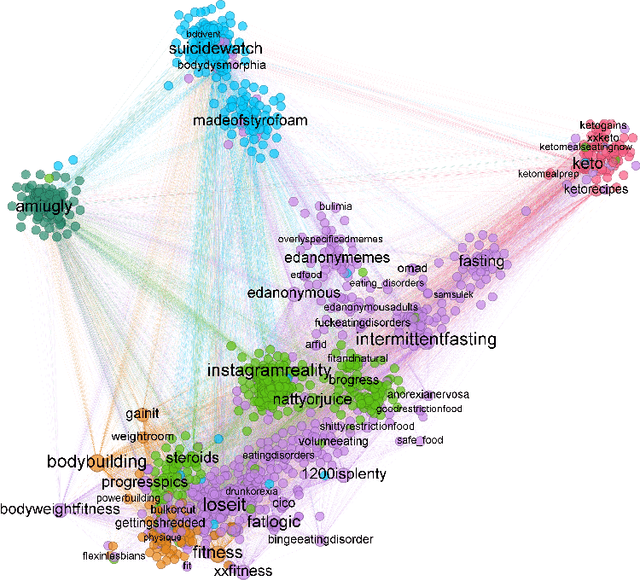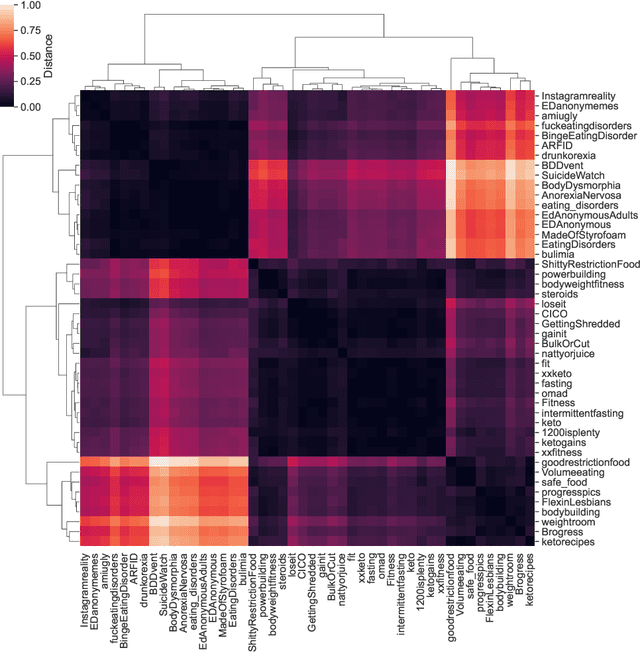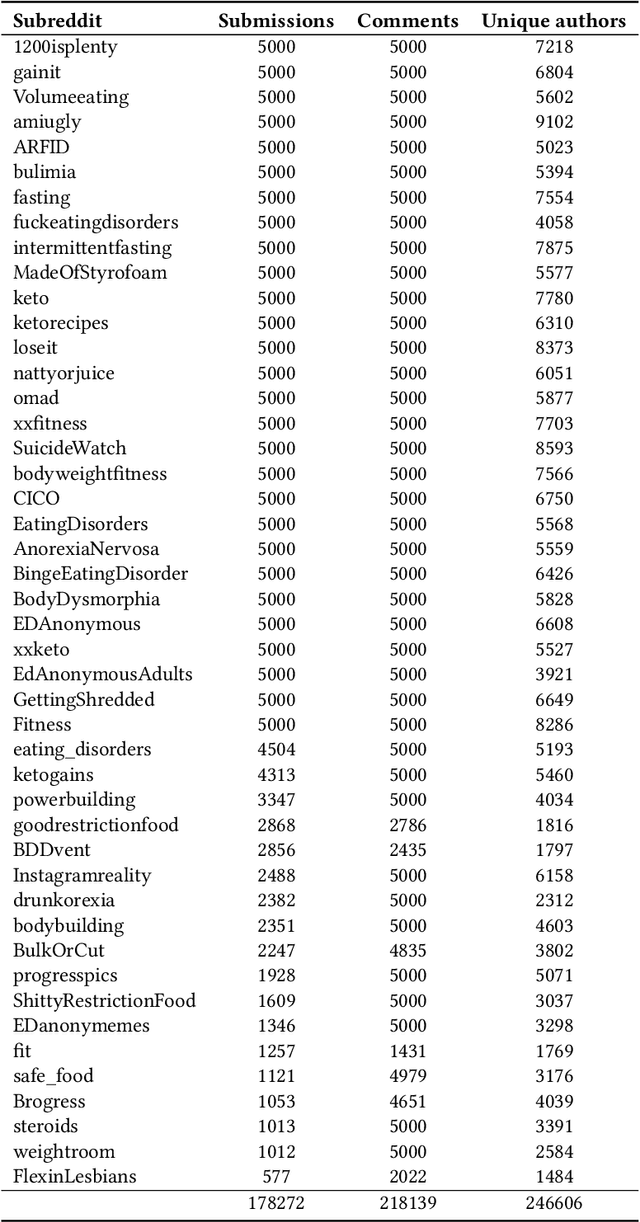Zihao He
STEER-BENCH: A Benchmark for Evaluating the Steerability of Large Language Models
May 27, 2025Abstract:Steerability, or the ability of large language models (LLMs) to adapt outputs to align with diverse community-specific norms, perspectives, and communication styles, is critical for real-world applications but remains under-evaluated. We introduce Steer-Bench, a benchmark for assessing population-specific steering using contrasting Reddit communities. Covering 30 contrasting subreddit pairs across 19 domains, Steer-Bench includes over 10,000 instruction-response pairs and validated 5,500 multiple-choice question with corresponding silver labels to test alignment with diverse community norms. Our evaluation of 13 popular LLMs using Steer-Bench reveals that while human experts achieve an accuracy of 81% with silver labels, the best-performing models reach only around 65% accuracy depending on the domain and configuration. Some models lag behind human-level alignment by over 15 percentage points, highlighting significant gaps in community-sensitive steerability. Steer-Bench is a benchmark to systematically assess how effectively LLMs understand community-specific instructions, their resilience to adversarial steering attempts, and their ability to accurately represent diverse cultural and ideological perspectives.
BUFF: Bayesian Uncertainty Guided Diffusion Probabilistic Model for Single Image Super-Resolution
Apr 04, 2025Abstract:Super-resolution (SR) techniques are critical for enhancing image quality, particularly in scenarios where high-resolution imagery is essential yet limited by hardware constraints. Existing diffusion models for SR have relied predominantly on Gaussian models for noise generation, which often fall short when dealing with the complex and variable texture inherent in natural scenes. To address these deficiencies, we introduce the Bayesian Uncertainty Guided Diffusion Probabilistic Model (BUFF). BUFF distinguishes itself by incorporating a Bayesian network to generate high-resolution uncertainty masks. These masks guide the diffusion process, allowing for the adjustment of noise intensity in a manner that is both context-aware and adaptive. This novel approach not only enhances the fidelity of super-resolved images to their original high-resolution counterparts but also significantly mitigates artifacts and blurring in areas characterized by complex textures and fine details. The model demonstrates exceptional robustness against complex noise patterns and showcases superior adaptability in handling textures and edges within images. Empirical evidence, supported by visual results, illustrates the model's robustness, especially in challenging scenarios, and its effectiveness in addressing common SR issues such as blurring. Experimental evaluations conducted on the DIV2K dataset reveal that BUFF achieves a notable improvement, with a +0.61 increase compared to baseline in SSIM on BSD100, surpassing traditional diffusion approaches by an average additional +0.20dB PSNR gain. These findings underscore the potential of Bayesian methods in enhancing diffusion processes for SR, paving the way for future advancements in the field.
AirExo-2: Scaling up Generalizable Robotic Imitation Learning with Low-Cost Exoskeletons
Mar 05, 2025Abstract:Scaling up imitation learning for real-world applications requires efficient and cost-effective demonstration collection methods. Current teleoperation approaches, though effective, are expensive and inefficient due to the dependency on physical robot platforms. Alternative data sources like in-the-wild demonstrations can eliminate the need for physical robots and offer more scalable solutions. However, existing in-the-wild data collection devices have limitations: handheld devices offer restricted in-hand camera observation, while whole-body devices often require fine-tuning with robot data due to action inaccuracies. In this paper, we propose AirExo-2, a low-cost exoskeleton system for large-scale in-the-wild demonstration collection. By introducing the demonstration adaptor to transform the collected in-the-wild demonstrations into pseudo-robot demonstrations, our system addresses key challenges in utilizing in-the-wild demonstrations for downstream imitation learning in real-world environments. Additionally, we present RISE-2, a generalizable policy that integrates 2D and 3D perceptions, outperforming previous imitation learning policies in both in-domain and out-of-domain tasks, even with limited demonstrations. By leveraging in-the-wild demonstrations collected and transformed by the AirExo-2 system, without the need for additional robot demonstrations, RISE-2 achieves comparable or superior performance to policies trained with teleoperated data, highlighting the potential of AirExo-2 for scalable and generalizable imitation learning. Project page: https://airexo.tech/airexo2
CS-PaperSum: A Large-Scale Dataset of AI-Generated Summaries for Scientific Papers
Feb 27, 2025



Abstract:The rapid expansion of scientific literature in computer science presents challenges in tracking research trends and extracting key insights. Existing datasets provide metadata but lack structured summaries that capture core contributions and methodologies. We introduce CS-PaperSum, a large-scale dataset of 91,919 papers from 31 top-tier computer science conferences, enriched with AI-generated structured summaries using ChatGPT. To assess summary quality, we conduct embedding alignment analysis and keyword overlap analysis, demonstrating strong preservation of key concepts. We further present a case study on AI research trends, highlighting shifts in methodologies and interdisciplinary crossovers, including the rise of self-supervised learning, retrieval-augmented generation, and multimodal AI. Our dataset enables automated literature analysis, research trend forecasting, and AI-driven scientific discovery, providing a valuable resource for researchers, policymakers, and scientific information retrieval systems.
Towards Pixel-Level Prediction for Gaze Following: Benchmark and Approach
Nov 30, 2024Abstract:Following the gaze of other people and analyzing the target they are looking at can help us understand what they are thinking, and doing, and predict the actions that may follow. Existing methods for gaze following struggle to perform well in natural scenes with diverse objects, and focus on gaze points rather than objects, making it difficult to deliver clear semantics and accurate scope of the targets. To address this shortcoming, we propose a novel gaze target prediction solution named GazeSeg, that can fully utilize the spatial visual field of the person as guiding information and lead to a progressively coarse-to-fine gaze target segmentation and recognition process. Specifically, a prompt-based visual foundation model serves as the encoder, working in conjunction with three distinct decoding modules (e.g. FoV perception, heatmap generation, and segmentation) to form the framework for gaze target prediction. Then, with the head bounding box performed as an initial prompt, GazeSeg obtains the FoV map, heatmap, and segmentation map progressively, leading to a unified framework for multiple tasks (e.g. direction estimation, gaze target segmentation, and recognition). In particular, to facilitate this research, we construct and release a new dataset, comprising 72k images with pixel-level annotations and 270 categories of gaze targets, built upon the GazeFollow dataset. The quantitative evaluation shows that our approach achieves the Dice of 0.325 in gaze target segmentation and 71.7% top-5 recognition. Meanwhile, our approach also outperforms previous state-of-the-art methods, achieving 0.953 in AUC on the gaze-following task. The dataset and code will be released.
FoAR: Force-Aware Reactive Policy for Contact-Rich Robotic Manipulation
Nov 24, 2024Abstract:Contact-rich tasks present significant challenges for robotic manipulation policies due to the complex dynamics of contact and the need for precise control. Vision-based policies often struggle with the skill required for such tasks, as they typically lack critical contact feedback modalities like force/torque information. To address this issue, we propose FoAR, a force-aware reactive policy that combines high-frequency force/torque sensing with visual inputs to enhance the performance in contact-rich manipulation. Built upon the RISE policy, FoAR incorporates a multimodal feature fusion mechanism guided by a future contact predictor, enabling dynamic adjustment of force/torque data usage between non-contact and contact phases. Its reactive control strategy also allows FoAR to accomplish contact-rich tasks accurately through simple position control. Experimental results demonstrate that FoAR significantly outperforms all baselines across various challenging contact-rich tasks while maintaining robust performance under unexpected dynamic disturbances. Project website: https://tonyfang.net/FoAR/
Improving and Assessing the Fidelity of Large Language Models Alignment to Online Communities
Aug 18, 2024



Abstract:Large language models (LLMs) have shown promise in representing individuals and communities, offering new ways to study complex social dynamics. However, effectively aligning LLMs with specific human groups and systematically assessing the fidelity of the alignment remains a challenge. This paper presents a robust framework for aligning LLMs with online communities via instruction-tuning and comprehensively evaluating alignment across various aspects of language, including authenticity, emotional tone, toxicity, and harm. We demonstrate the utility of our approach by applying it to online communities centered on dieting and body image. We administer an eating disorder psychometric test to the aligned LLMs to reveal unhealthy beliefs and successfully differentiate communities with varying levels of eating disorder risk. Our results highlight the potential of LLMs in automated moderation and broader applications in public health and social science research.
Feelings about Bodies: Emotions on Diet and Fitness Forums Reveal Gendered Stereotypes and Body Image Concerns
Jul 04, 2024



Abstract:The gendered expectations about ideal body types can lead to body image concerns, dissatisfaction, and in extreme cases, disordered eating and other psychopathologies across the gender spectrum. While research has focused on pro-anorexia online communities that glorify the 'thin ideal', less attention has been given to the broader spectrum of body image concerns or how emerging disorders like muscle dysmorphia ('bigorexia') present in online discussions. To address these gaps, we analyze 46 Reddit discussion forums related to diet, fitness, and associated mental health challenges. Using membership structure analysis and transformer-based language models, we project these communities along gender and body ideal axes, revealing complex interactions between gender, body ideals, and emotional expression. Our findings show that feminine-oriented communities generally express more negative emotions, particularly in thinness-promoting forums. Conversely, communities focused on the muscular ideal exhibit less negativity, regardless of gender orientation. We also uncover a gendered pattern in emotional indicators of mental health challenges, with communities discussing serious issues aligning more closely with thinness-oriented, predominantly feminine-leaning communities. By revealing the gendered emotional dynamics of online communities, our findings can inform the development of more effective content moderation approaches that facilitate supportive interactions, while minimizing exposure to potentially harmful content.
COMMUNITY-CROSS-INSTRUCT: Unsupervised Instruction Generation for Aligning Large Language Models to Online Communities
Jun 17, 2024



Abstract:Social scientists use surveys to probe the opinions and beliefs of populations, but these methods are slow, costly, and prone to biases. Recent advances in large language models (LLMs) enable creating computational representations or "digital twins" of populations that generate human-like responses mimicking the population's language, styles, and attitudes. We introduce Community-Cross-Instruct, an unsupervised framework for aligning LLMs to online communities to elicit their beliefs. Given a corpus of a community's online discussions, Community-Cross-Instruct automatically generates instruction-output pairs by an advanced LLM to (1) finetune an foundational LLM to faithfully represent that community, and (2) evaluate the alignment of the finetuned model to the community. We demonstrate the method's utility in accurately representing political and fitness communities on Reddit. Unlike prior methods requiring human-authored instructions, Community-Cross-Instruct generates instructions in a fully unsupervised manner, enhancing scalability and generalization across domains. This work enables cost-effective and automated surveying of diverse online communities.
Don't Blame the Data, Blame the Model: Understanding Noise and Bias When Learning from Subjective Annotations
Mar 06, 2024Abstract:Researchers have raised awareness about the harms of aggregating labels especially in subjective tasks that naturally contain disagreements among human annotators. In this work we show that models that are only provided aggregated labels show low confidence on high-disagreement data instances. While previous studies consider such instances as mislabeled, we argue that the reason the high-disagreement text instances have been hard-to-learn is that the conventional aggregated models underperform in extracting useful signals from subjective tasks. Inspired by recent studies demonstrating the effectiveness of learning from raw annotations, we investigate classifying using Multiple Ground Truth (Multi-GT) approaches. Our experiments show an improvement of confidence for the high-disagreement instances.
 Add to Chrome
Add to Chrome Add to Firefox
Add to Firefox Add to Edge
Add to Edge